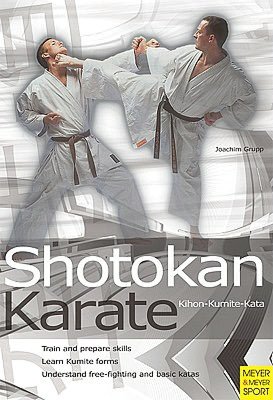Shotokan Karate Kihon-Kumite-Kata by Joachim Grupp


Download eBook
Shotokan Karate Kihon-Kumite-Kata Joachim Grupp ebook
ISBN: 9781841262819
Publisher: Meyer & Meyer Sport, Limited
Page: 160
Format: pdf
Shotokan karate consists od three parts: kihon, kata and kumite. We were doing movements like side. The session was for advanced karateka so we used the time to practice kihon, kumite and Seiryu kata: primarily revising what I taught during the weekend seminars. Shotokan karate is based on a deep stance and the ability to generate power from this posture. Shotokan has three main areas of emphasis: Kihon, Kata, and Kumite. Kihon (Japanese for 'basics')is the most essential part of it. Question: Kancho, in the SKIF system you teach specific ways of breaking down the kihon, and you have a detailed system of teaching kumite. Usually divided into three parts: Kihon (basics), kata (forms or patterns of moves), and kumite (sparring). Kumite includes sparring against an opponent. A little different kihon Sensei Gatch has us start off with some Kihon. Keeping with Tradition- JKA Shotokan Karate An increasing number of karate organizations have established weight classes and a point system for tournaments, giving karate a sport-like status. This tournament is sponsored by Sensei Jimmy Bowden, Chief Instructor of the Shotokan Karate Dojo – Kenkojuku in Perry, Florida. Jaylin Farnsworth ______(9 Kyu) Kihon-Bronze -- Kata-Silver --- Kumite- Bronze. Today, Shotokan Karate includes kihon (basics), kata (forms), kumite (fighting/sparring) and bunkai (applications - although not taught by everyone). JKA karate is completely natural, not arbitrarily crafted for use in a point-based match. In addition, you have some specific ways of doing the kata. In fact, The inseparable trinity—kihon, kata and kumite, leading to kime—remain essentially unchanged, although constantly refined. Sensei had us do some odd combinations. Kihon covers basic techniques, while Kata includes movements for defense against multiple opponents. Shotokan training is normally separated into three categories: kihon, kata and kumite. It's simply repeating single techniques.
